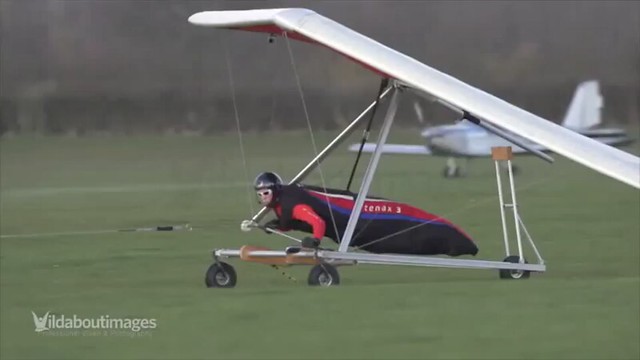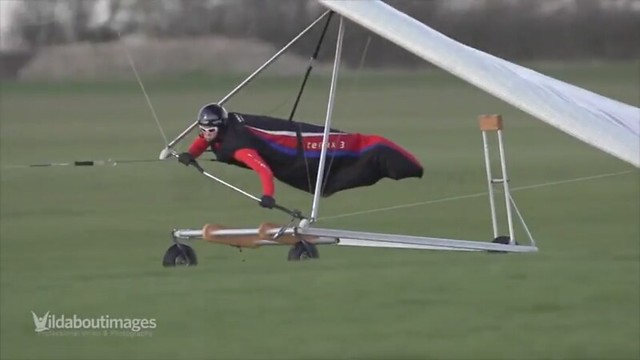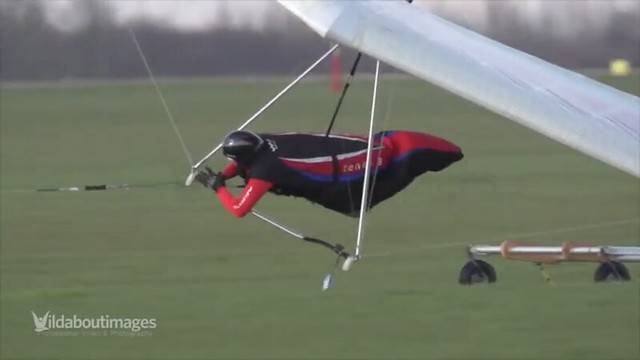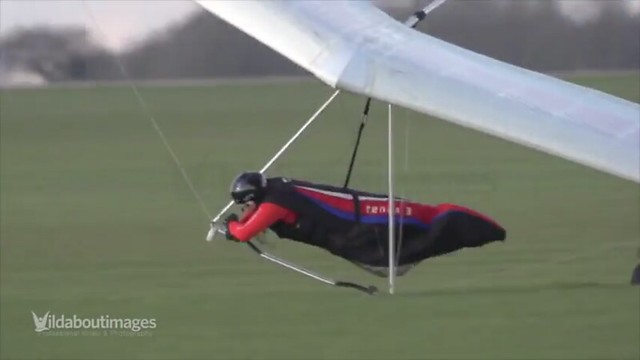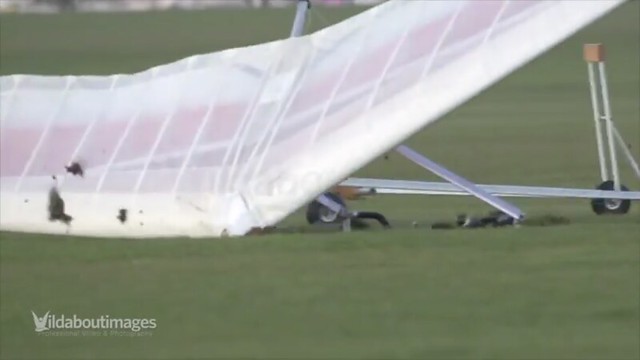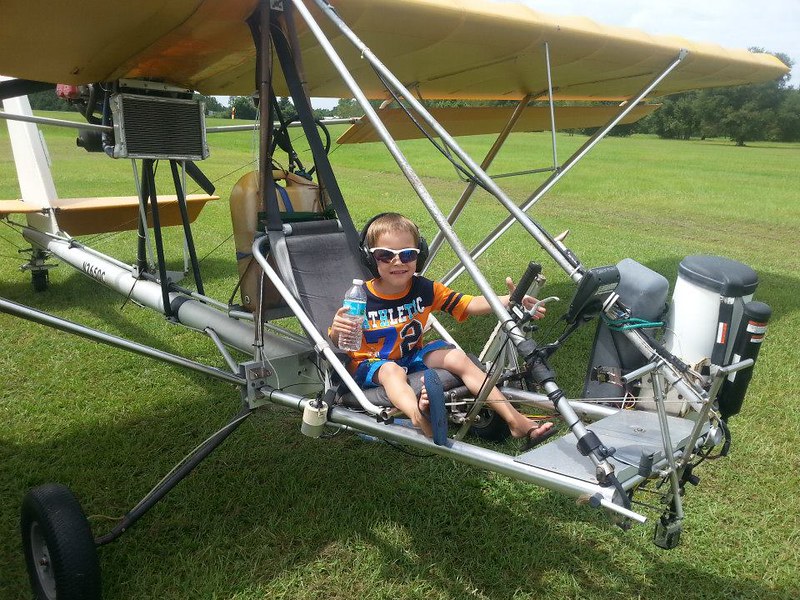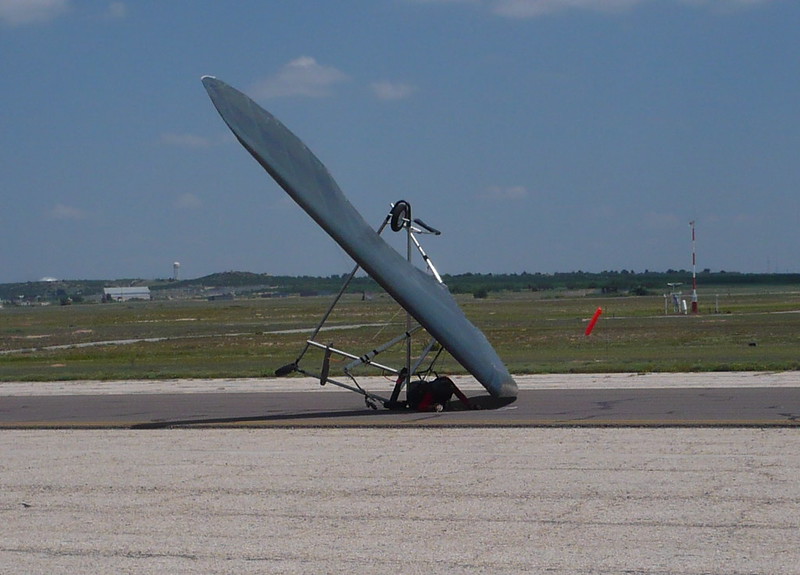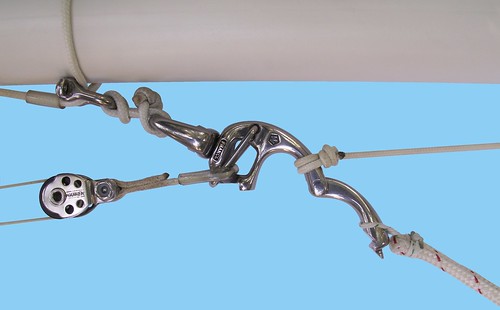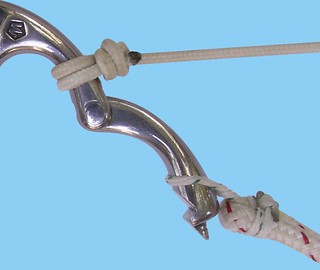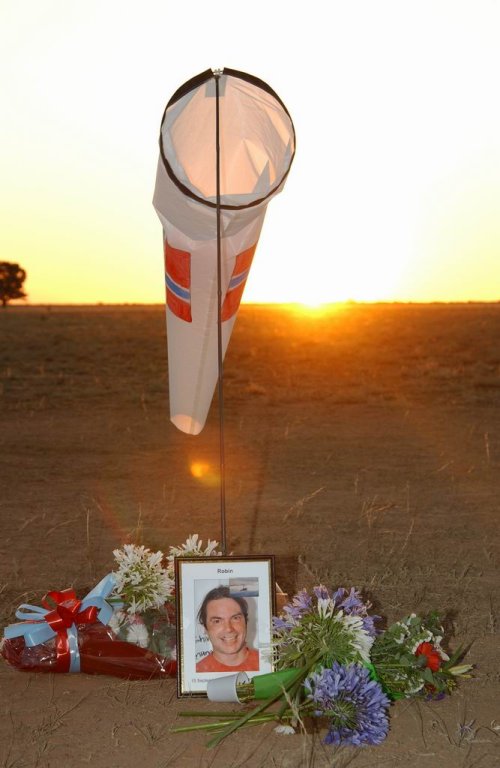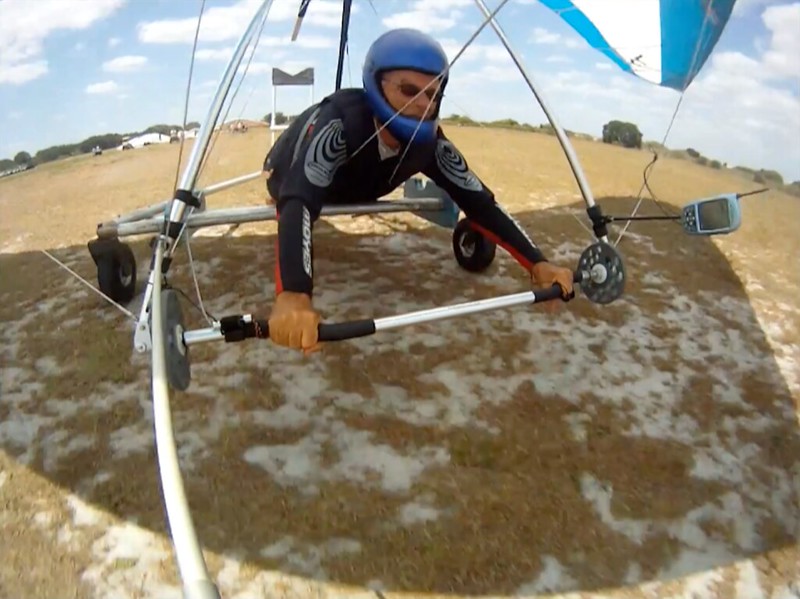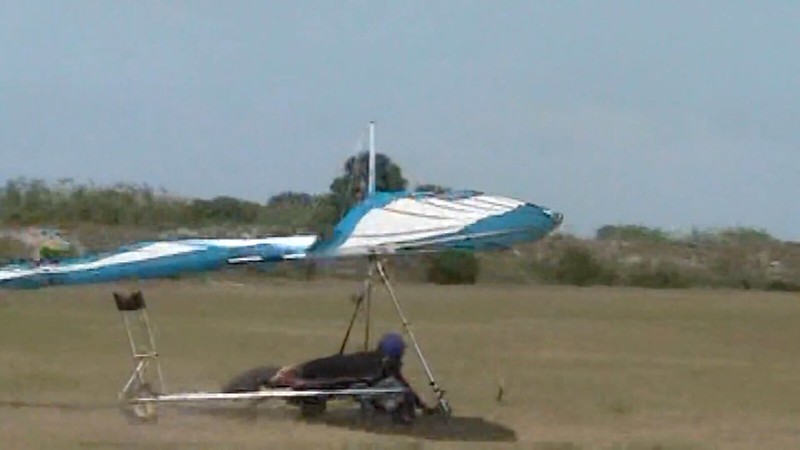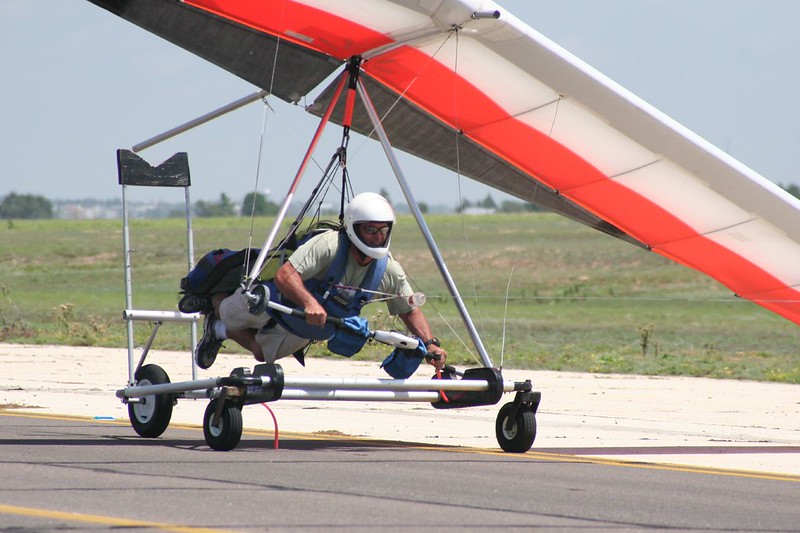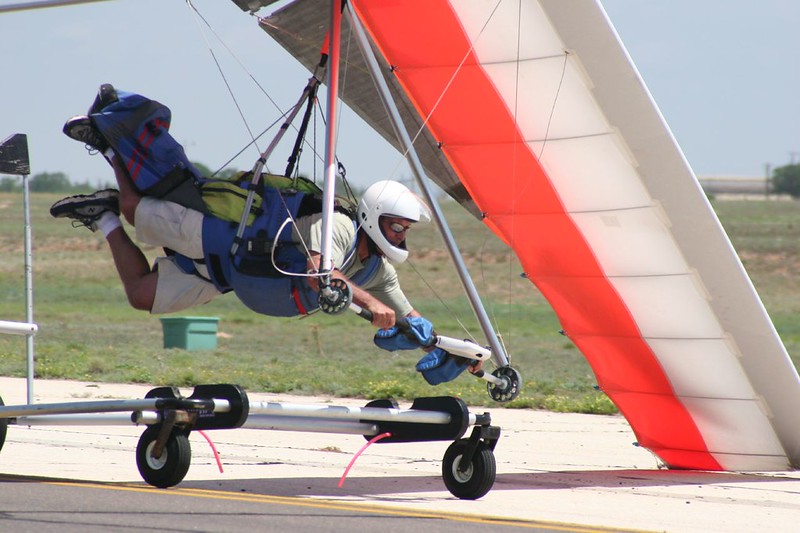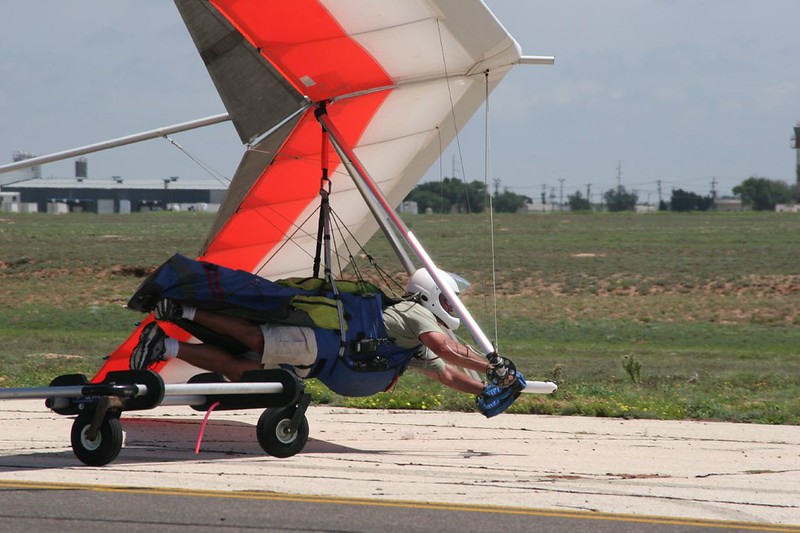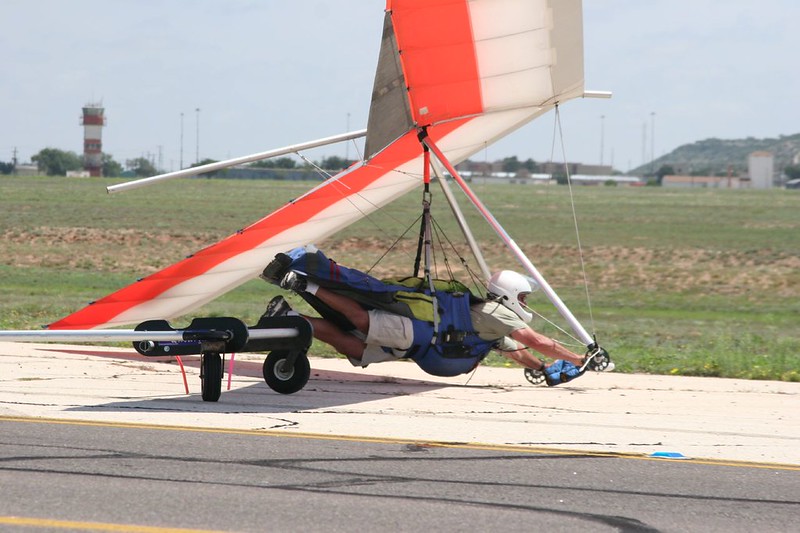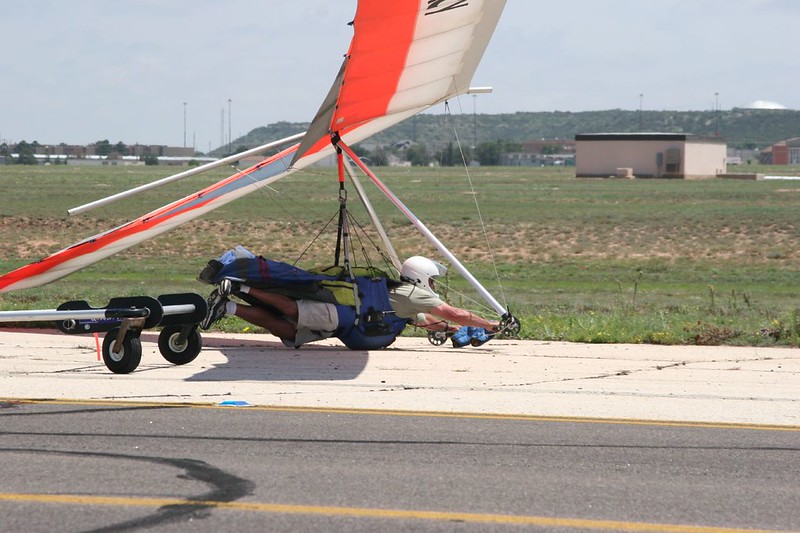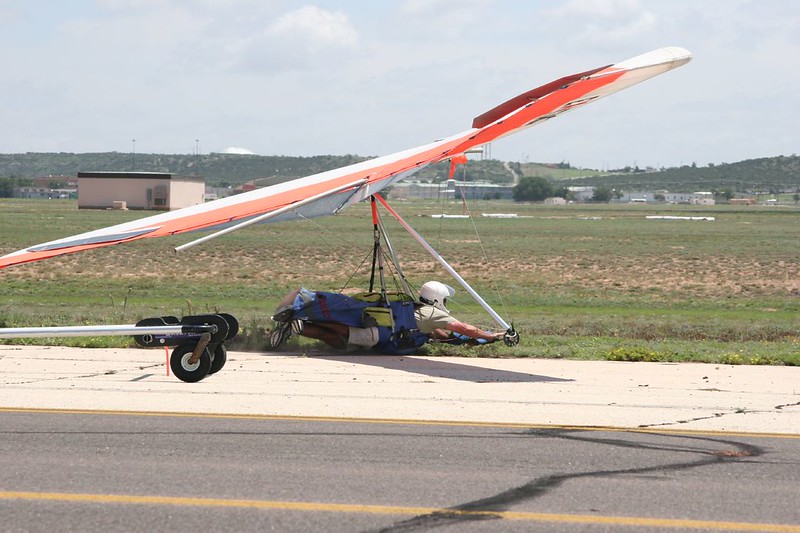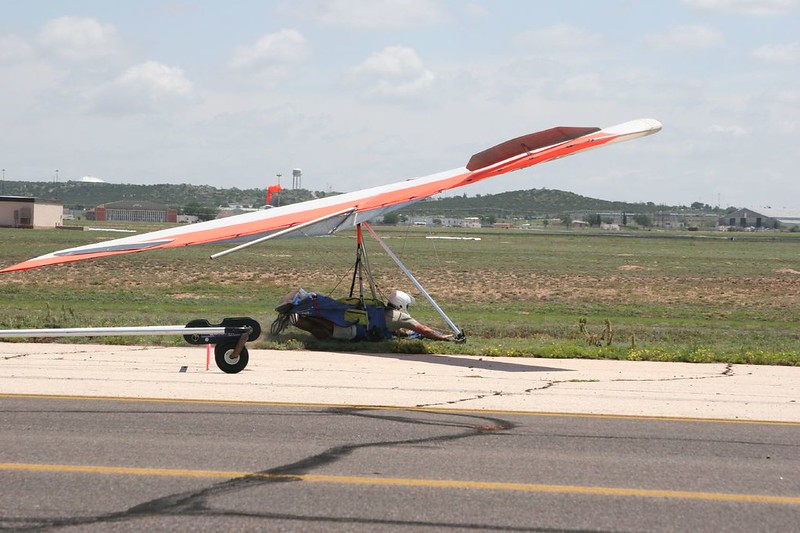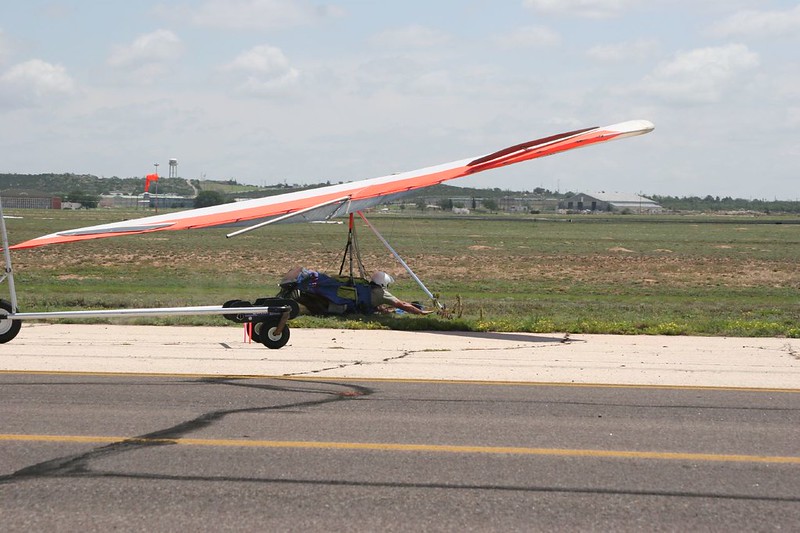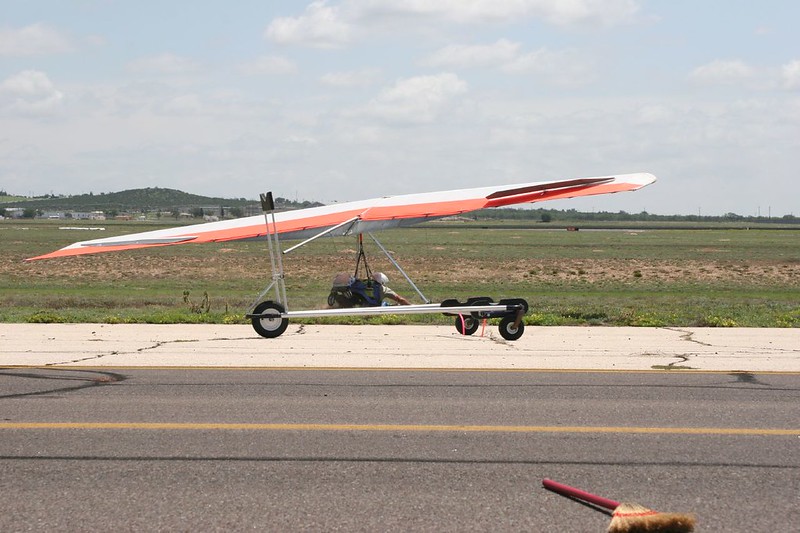http://ozreport.com/11.167
2007 Worlds - nobody died
Davis Straub - 2007/08/23 14:58:11 UTC
You can leave safety up to the individual pilots or you can build safety into your system.
Right. If you've built safety into your system that certainly removes any options to leave any safety issues up to any individual pilots. And conversely, of course, if your leaving safety up to the individual pilots the meet heads are precluded from doing anything to build any safety into their system - like, for example, setting minimum tow equipment performance standard, mandating wheels or skids for all gliders, establishing no-go meteorological limits.
There was only two minor accidents...
Yes. There WAS only two minor accidents. Thanks, in no small part, to meet heads who spares no effort to get things rite.
...that resulted in injury to pilots during the 2007 Worlds.
- One minor accident that resulted in minor injury to one pilot and another minor accident that resulted in MAJOR injury to another pilot.
- And thirty of forty minor accidents that just resulted in busted up gliders.
- And three or four MAJOR accidents that resulted in life threatening injuries to pilots.
- Also fucked up two spectators pretty good.
- And a shitload of really ugly lockouts and inconvenience stalls at altitude.
But nobody died. So the 2007 World comp was a stunning success due solely to the outstanding efforts we meet heads had put into building safety into their system - and, of course, due not a whit to leaving any safety issues up to the individual pilots as we meet heads had taken all those options totally off the table.
That is, if we ignore the pool party. Beer, vodka, Red Bull, and water - a dangerous combination.
- Fuck yeah. Leave anything related to safety up to individual pilots and watch what happens - if you have the stomach for it.
- Pro toad bridle, Davis Link, monster thermal...
http://farm9.staticflickr.com/8394/8696380718_787dbc0005_o.png
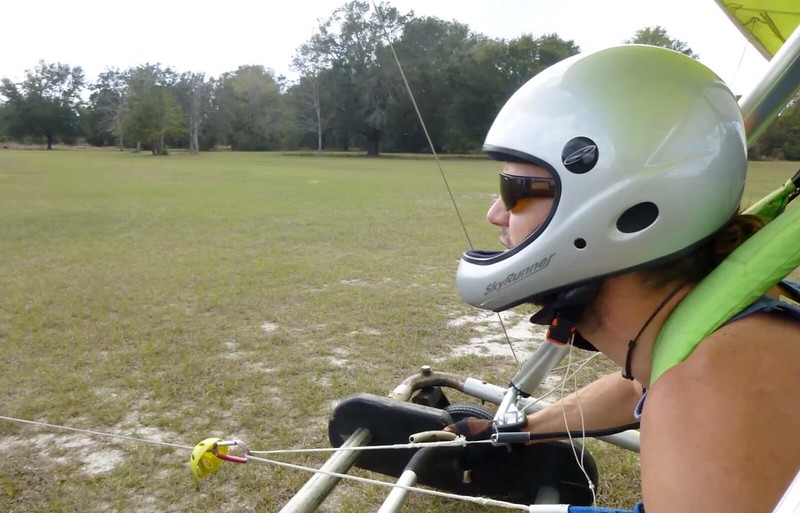
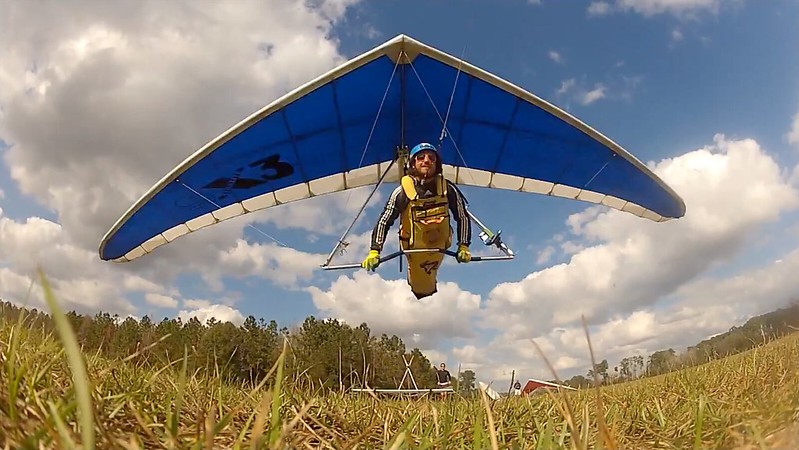 http://farm4.staticflickr.com/3728/9655895292_f4f808fb0e_o.png
http://farm4.staticflickr.com/3728/9655895292_f4f808fb0e_o.png
06-03114
What adjective would you use to describe that combination, Davis?
http://4.bp.blogspot.com/-bRrpHNa68iY/UQ6Pv9gRZyI/AAAAAAAAjTg/Hc22bx5122Q/s2048/20943781_BG1.jpg

Feel free to speculate when preparing your response.
We planned for two years for safety building on the record of the Flytec Championships held at Quest Air...
THIS:

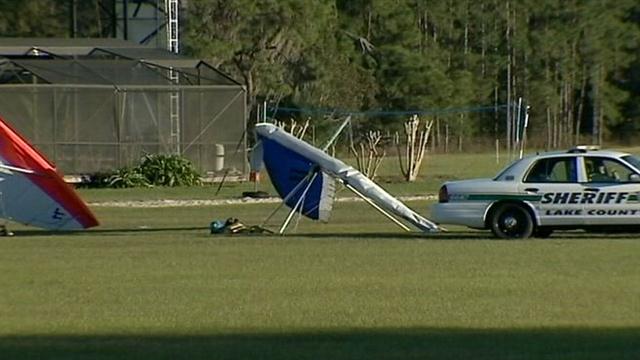
Quest Air?
...and the previous meets in Big Spring. There was an absolute requirement for certain types of bridles, weak links, and secondary releases. The tug pilots were experienced and well trained. The ground crew leaders were very experienced and very much in charge.
And these were the primary reasons you had such a smashing safety success at the 2007 Worlds.
- The very experienced and very much in charge ground crew leaders and their teams caught hundreds of deadly issues with the comp pilots queuing up for takeoff.
- There were untold scores of low level lockouts what would've been catastrophic had there not been an absolute requirement for certain types of bridles, weak links, and secondary releases and experienced and well trained tug pilots fixing whatever was going on back there by giving the gliders the ropes.
Thanks to our superb built in safety system - highly trained crew, fire extinguishers, watertight compartments, life jackets, lifeboats, flare guns - our transatlantic voyage went off without a hitch.
An ACTUAL safe/competent operation is always BACKED UP with well trained personnel and emergency equipment but NONE of that shit EVER...
Dr. Trisa Tilletti - 2012/06
You and I have flown sailplanes for almost as long as we have flown hang gliders. We own two sailplanes and have two airplanes that we use for towing full-size sailplanes. In all the time that we have flown and towed sailplanes, we have not experienced or even seen a sailplane weak link break.
...comes into play. So if you're claiming that the comp was safe for all of the issues you're highlighting you're obviously lying and/or running dangerous operations - in your case obviously BOTH.
"Sure Dad, I drove the car VERY safely last night. Good thing the horn, tires, antilock brakes, seat belts, airbags, collapsible steering column were all in good shape and functioning properly so that I could be discharged from the hospital a couple hours ago. And the emergency responders really had their shit together - very experienced and very much in charge."
Every pilot had to document their aerotowing experience and every pilot was checked out by Drew to determine if they could safely tow. Unlike at the previous women's worlds in 2006 at Quest Air, every pilot displayed sufficient skills to two safely.
http://c2.staticflickr.com/2/1562/25190537495_d9a39e894f_o.jpg
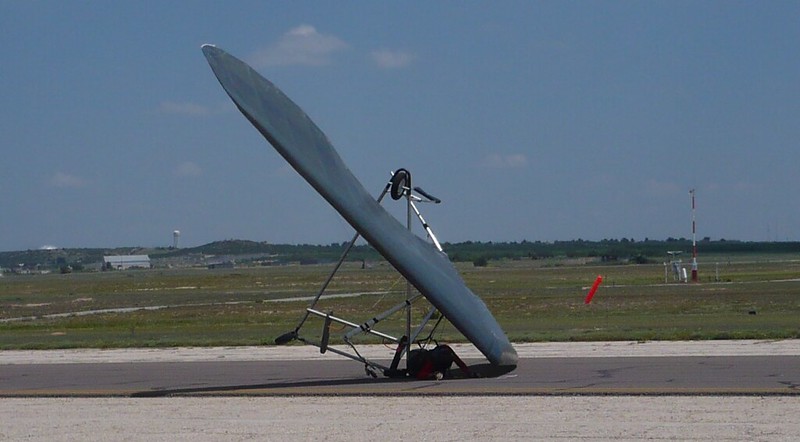
Obviously. (Anybody ever see another AT launch crash like that before or since?)
Drew Harris and Flavia set up the staging lines after many vigorous discussions of how they should be laid out. These debates allowed for all the concerned parties to state their views.
All the concerned parties save, of course, for the individual pilots. We'd already decided to build safety into our system so it would've obviously been a totally pointless...
http://ozreport.com/forum/viewtopic.php?t=31052
Poll on weaklinks
Jim Rooney - 2013/03/04 19:31:36 UTC
We all play by the same rules, or we don't play.
Morningside decided that they were happy with 200lb weaklink. They changed their tug's link and they don't just pass the stuff out either. If you'd like to know more about it... go ask them.
The law of the land at comps was 130lb greenspot or you don't tow. Seriously. It was announced before the comp that this would be the policy. Some guys went and made their case to the safety committee and were shut down. So yeah, sorry... suck it up.
...waste of time to allow the individual pilots to state their views.
The ground crew was concentrated and never over taxed or spread out through more than two lines. This meant that there was always more than sufficient crew to assure safety.
Are you sure? I myself am wondering if things might have gone better if the ground crew had been undertaxed and never spread out through more than one lines.
Every pilot was checked and reassured.
How much time did they need to spend reassuring Alejandro that he displayed sufficient skills to two safely?
Ever pilot was told every time to hold onto the cart (the orange hose handles were the best - see below) until they were flying. The one accident that happened on the line came when a pilot had taken off his wheels (he was the only pilot flying with wheels)...
So then why are you making a point about the wheels?
http://c2.staticflickr.com/2/1562/25190537495_d9a39e894f_o.jpg

'Cause when he stalled back onto the asphalt his glider which didn't have wheels, stopped a lot faster than his cart, which did?
...and when he came off the cart slow and too early.
Well, things could've turned out a lot worse. I hate to think what might have happened to him without:
- an absolute requirement for certain types of bridles, weak links, and secondary releases
- an experienced and well trained tug pilot
- a very experienced and very much in charge ground crew leader
His English wasn't good...
And wasn't likely to get much better hanging around with a bunch of dickheaded US glider people.
...so he may not have understood the requests for him to hold on...
- And, despite the fact that you were under 170 miles from the Mexican border and amongst the competitors there were six from Spain, five from Mexico, five from Ecuador, two from Columbia, and one other from Guatemala, there was just no way to effectively communicate with this guy.
- And, unfortunately, his vision wasn't very good either. So he wasn't able to watch proper dolly launches and understand what was going on and what he was supposed to be doing.
- But prior to Task 4 he was launching so well that none of the meet heads, experienced and well trained tug pilots, very experienced and very much in charge ground crew leaders felt any need to advise or caution him concerning his launch. Also successfully towed to release altitude in thermal conditions on all previous exercises of the event without so much as a single syllable of criticism from any of the meet heads, experienced and well trained tug pilots, very experienced and very much in charge ground crew leaders. Go figure.
...and he was one of the least experienced pilots at the Worlds.
- But, unlike at the previous women's Worlds in 2006 at Quest Air, had displayed sufficient skills to two safely - but just barely made the cutoff. Fortunately for him, I'd say. Could've had a really nasty crash if he hadn't been able to document his aerotowing experience and been checked out by Drew to determine he could safely tow.
- So you knew what everybody's experience was before anything got off the ground. And there's absolutely nothing wrong with your minimum standards.
- Sure is a good thing you meet heads, experienced and well trained tug pilots, very experienced and very much in charge ground crew leaders had one of one of the least experienced pilots at the Worlds - who may not have understood the requests for him to hold onto the cart and came off slow and too early on a pro tow bridle, isn't it Davis?
http://ozreport.com/12.081
Weaklinks - the HGFA rules
Davis Straub - 2008/04/22 14:47:00 UTC
It was required that pilots be able to be connected to the tow line quickly both in order to be fair to all pilots and get them in the air in time to compete with each other, as well as to promote safety. It is safer to have a simple uniform release/bridle system that the ground crew is familiar with and can determine if there is a problem. The simpler and more uniform the safer, system wide.
Getting pilots into the air quickly is also safer as it reduces the stress that pilots feel on the ground and keeps them focused on their job which is to launch safely and without hassling the ground crew or themselves. When we look at safety we have to look at the whole system, not just one component of that system. One pilot may feel that one component is unsafe from his point of view and desire a different approach, but accommodating one pilot can reduce the overall safety of the system.
Having him on a three pointer - like Steve Exceptionally-Knowledgeable Wendt and everybody else and his dog does for the least experienced pilots. Accommodating him as such might've reduced the overall safety of the system. Rather than that one minor accident you could've had ten or fifteen MAJOR ones. Good call having him take his wheels off too.
The staging lines were widely separated separating the tug traffic to avoid collisions. The Big Spring airport is huge and we had plenty of room.
Because we were launching from an asphalt taxi way and not a grass field, it was super important that pilots hold on hard to the carts.
But not at all important for them to have wheels and kneepads or skiddable harness.
The cart would start easily (keeping the weaklink from breaking)...
Weak links that COULDN'T be kept from breaking...
http://ozreport.com/forum/viewtopic.php?t=24846
Is this a joke ?
Davis Straub - 2011/08/28 15:26:28 UTC
Then again, Russell Brown had us double up behind him after six breaks in a row at Zapata. We couldn't figure out why we had so many breaks so quickly. Maybe just coincidence.
...is light morning conditions at Zapata. Go figure.
...and would get going fast quickly, which had a different feel than the grass fields. Pilots were taught to make sure that they can enough speed to fly out of any trouble if a weaklink broke.
- Oh. Every pilot had displayed sufficient skills to two safely but they all needed to be TAUGHT to make sure to carry enough speed to handle the inconvenience of a weak link generated increase in the safety of the towing operation.
- So why aren't you telling us what the ABSOLUTE REQUIREMENT for a weak link which increases the safety of the towing operation is and how - building on the record of the Flytec Championships held at Quest Air and the previous meets in Big Spring - you determined that ABSOLUTE REQUIREMENT?
We did have one minor injury at a landing field that I chose.
So you've said that there were "only" "two MINOR ACCIDENTS that resulted in injury". And you've stated that one of the accidents resulted in "one" "minor" injury - five stitches and flew the next day. And you've very conspicuously said NOTHING about Alejandro's injuries - other than the fact that...
http://ozreport.com/11.159
2007 Worlds - Day 5, Task 5
Davis Straub - 2007/08/13 15:52:15 UTC
We had a slight accident on launch yesterday when Alejandro Diez from Guatemala came out of the cart too slow and dove into the asphalt. He was injured but will be out of the hospital today.
...he was supposed to have been out of the hospital the next day. And you make no mention of the fact that that crash knocked him out of the rest of the comp. So we can conclude beyond any reasonable shadow of a doubt that you did have one MAJOR injury - quite likely a career ender like John Claytor's - to pilots during the 2007 Worlds.
Minimal damage to the glider.
Great! Something else must've absorbed just about all the impact.
Do you get a bulk rate discount on lipstick?
And think about it, people of varying ages... When you go to an event that actually WAS safe and well run and then come back and write nine paragraphs about how safe and well run it was? Whenever you read an article from a u$hPa Industry pigfucker about how safe and well run his event was you can immediately bet your bottom dollar that it was a travesty and start looking for all the crap the aforementioned pigfucker ISN'T saying.
The field was inappropriate for landing (it was part of a small air field) as it contained power lines, fences, and stakes. The Google Earth photo was not sharp enough to provide the task committee with a clear picture of what was there. I should have seen that problem. Numerous pilots had difficulty landing there, but one pilot had to have five stitches (he flew the next day).
The one HONEST part of the report. I wonder if Davis had to take some pills in order to get it on paper properly.




